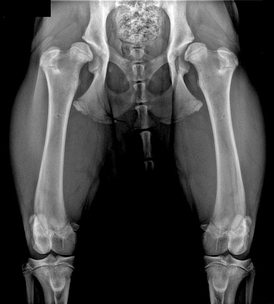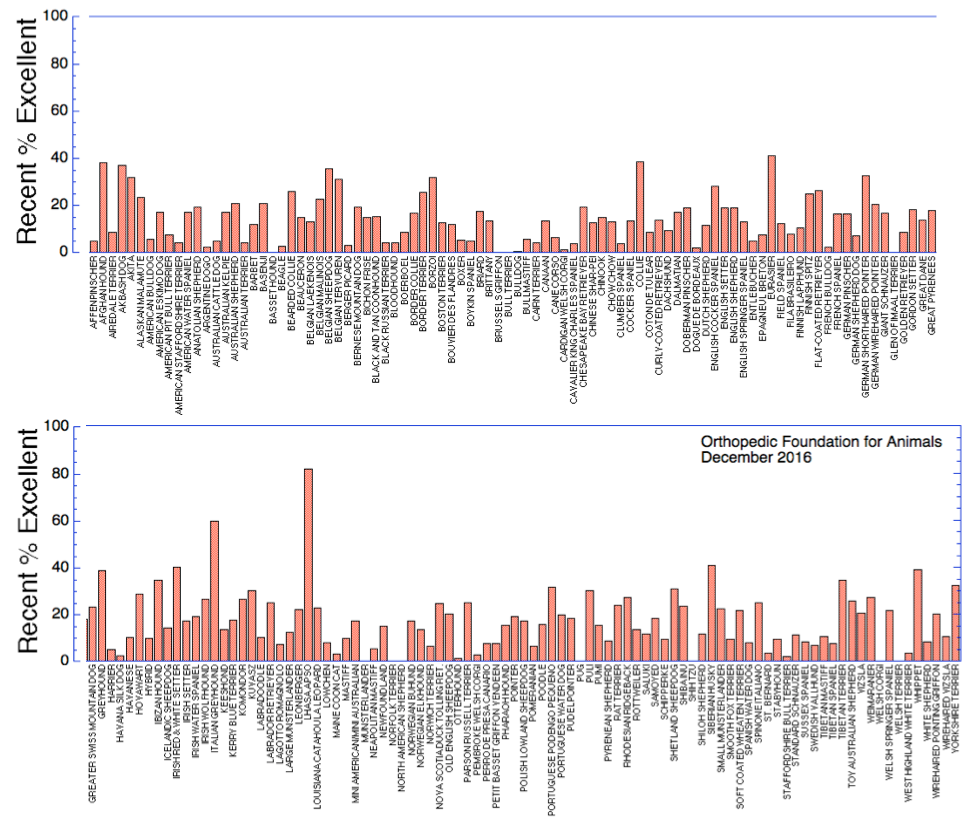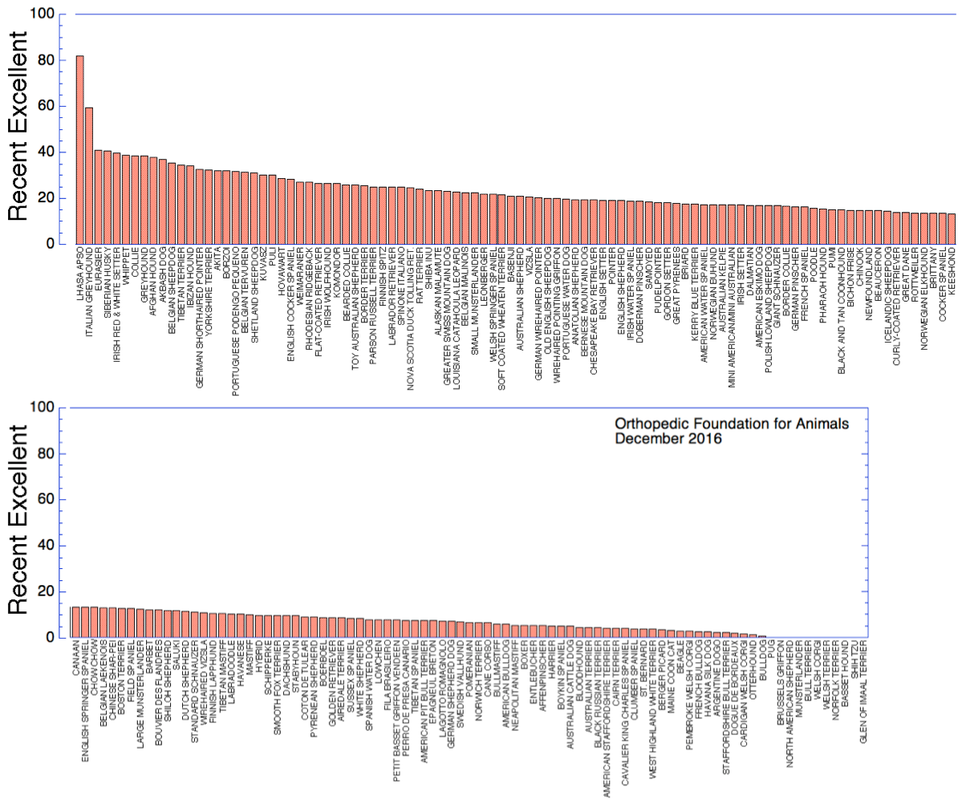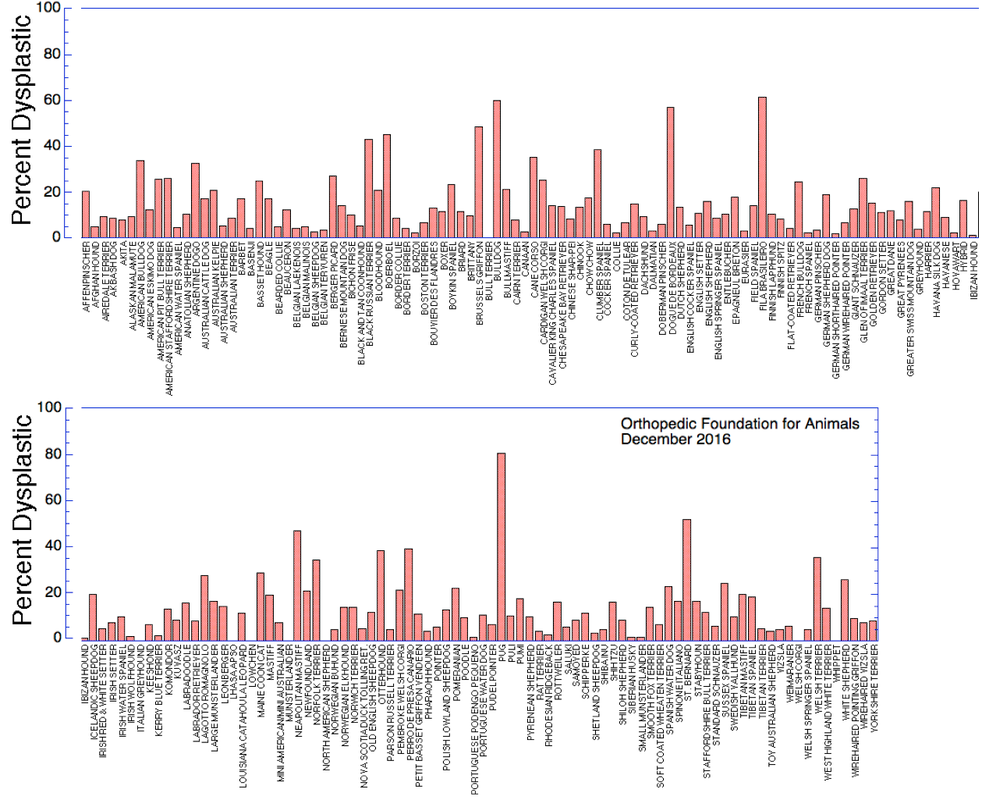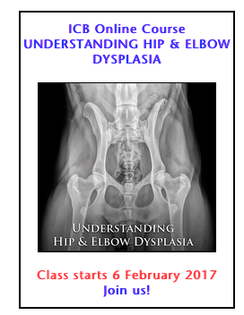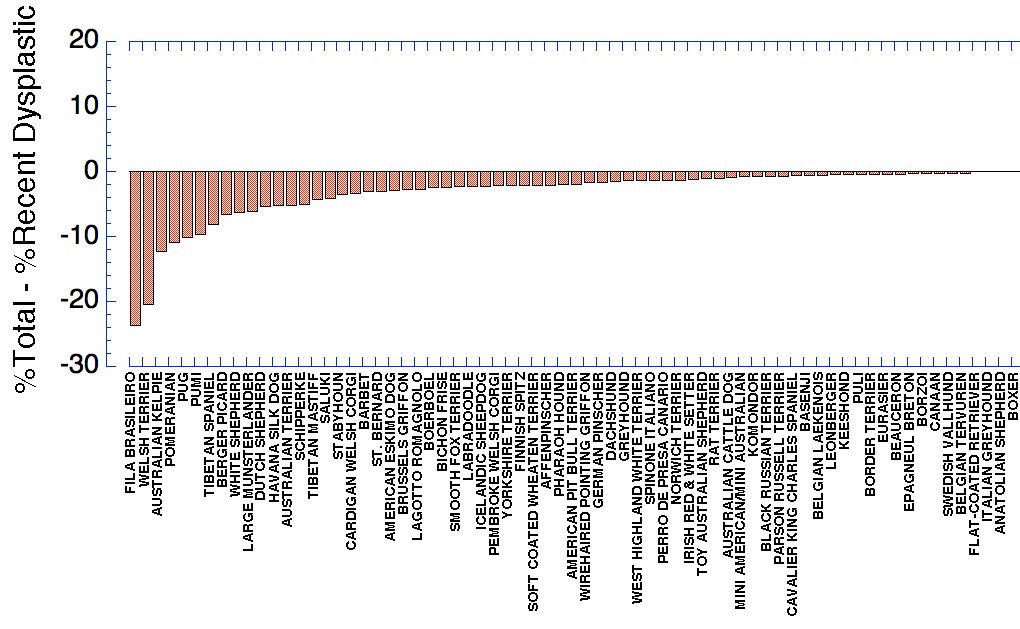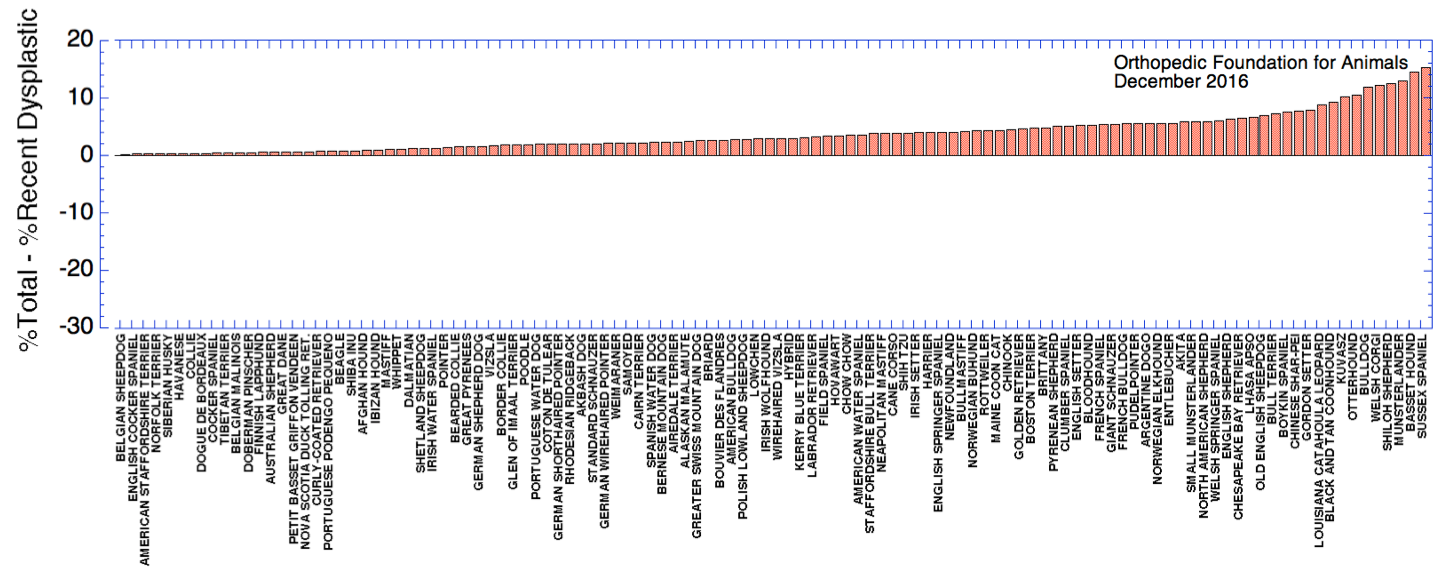| I have downloaded these data and graphed them various ways to make the information more accessible. Because there is a large number of breeds, breed names are almost impossible to read on the whole graphs, but you can download a copy of the file or I have split the graph in two to improve legibility. The data are presented both alphabetically (so you can find the breed you're looking for) and by rank (so you can compare with other breeds). The files for the large graphs can be downloaded. There are a few notable points (for dogs born 2011-2015):
|
|
| ||||
| __excellent__rank_.png |
The graph just above has been split below to make the names a bit easier to read.
| __dysplastic__alpha_.png |
| __dysplastic__rank_.png |
The graph just above has been split below to make the names a bit easier to read.
Total & Recent DysplasticIndicated for each breed are the % Dysplastic reported in December 2016 for dogs born 2011-2015 (green bar) and the Total % Dysplastic over all years (red bar). If a breed has recent improvement, the green bar will be shorter than the red bar. Only breeds with % Dysplastic < 10% are graphed.
| |||
| total-recent_diff.png |
check out the great information in ICB's online course!
- Is hip dysplasia genetic? Environment? Both?
- Can small dogs have hip dysplasia?
- Will Vitamin C help?
- Is fast growth a risk factor?
- Is exercise good or bad for puppies?
- Does a raw diet prevent hip dysplasia?
- Could it be caused by not enough calcium?
- Can a dog with bad hips produce a puppy with good hips?
- Are bad elbows inherited?
- Is there a DNA test for hip dysplasia?
- Are puppies born with hip dysplasia?
- Do slippery floors cause hip dysplasia?
| We'll cover anatomy, biomechanics, nutrition, and the latest research, as well as how you can reduce risk by understanding heritability and estimated breeding values. The course is online, available anywhere in the world. Materials are available 24/7 Online course Starts 6 February 2017! For info and registration, go to - http://bit.ly/2iEEh1e |
ICB's online courses
*******************
Join our Facebook Group
ICB Breeding for the Future
...the science of dog breeding
*******************
Visit our Facebook Page
ICB Institute of Canine Biology
...the latest canine news and research
